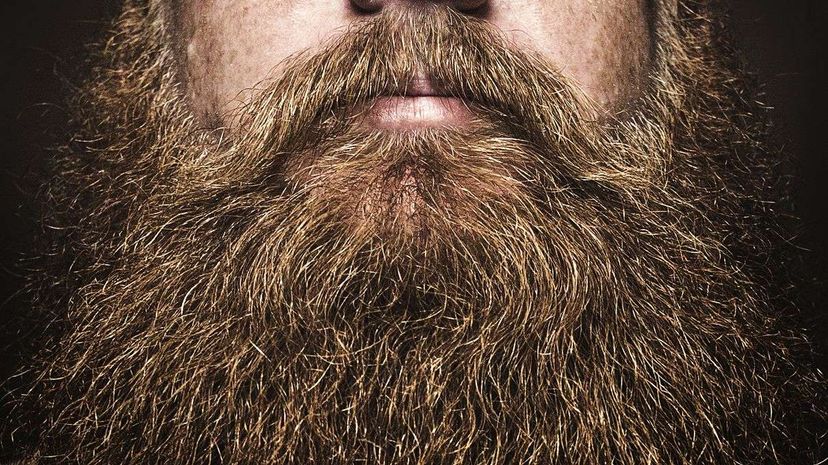 “Sorry, dude. Model Chris John Millington called that big, bushy beard dead back in April 2015. RyanJLane/Getty Images
“Sorry, dude. Model Chris John Millington called that big, bushy beard dead back in April 2015. RyanJLane/Getty Images
The decline, it seems, began some time last year. There were simply too many beards. Trendy society could no longer support them. Or, as researcher Dr. Robert C. Brooks told The Guardian in April 2014, "We may well be at peak beard."
Brooks, an evolutionary ecology expert at the University of New South Wales, Kensington, was talking about a study he co-authored, which found that the more common a type of facial hair was, the less attractive it was perceived to be.
Not that we need science to tell us overexposure kills appeal. Witness Myspace. Or Ben Affleck’s career in the early 2000s. Chef Richard Potts puts a trendy food’s swan song at the exact moment when fast-food restaurants add it to their menus.
A trend thus dies on its own, but who calls the death varies. Journalists working fashion, style and culture beats have been waving goodbye to beards for some time, but evidence was lacking. It may turn out to be Scottish model Chris John Millington, known for wearing a dark, bushy beard that showed off his dreamy, green eyes, who reliably signaled the end.
"It’s over, fellas, it’s over," Millington tweeted (and then deleted) in April 2015, referring to the bearded-models trend. "The industry literally rolls its eyes at [bearded] newcomers now. The market is saturated."
On Instagram, proof: Millington’s big, bushy beard was gone, replaced by, well, a smaller, neater beard and a big, bushy mustache. The "#beardstache" was grimace-inducing and yet held the gaze like a car wreck.
Media outlets reported it. Esquire dwelled on it. Millington’s Instagram followers undoubtedly gasped at it — and then told their boyfriends to trim their beards.
Declaring a trend dead (or alive, for that matter) is often self-fulfilling. As a model, Millington is arguably in a position to know the beard’s fashion status, but many end-of-trend reports seem more like wishful thinking. In "Design Trends That Are Dead in 2015," decorator Katie Brown kills off smocked bedding, monotone décor and indoor hammocks, among other trends she finds "tired, tacky, and downright troubling." In reality, those trends are only dead if her readers buy it.
Evidence-based predictions are more significant. The Week’s Peter Weber called the death of the gourmet cupcake based on reports of financial troubles for major players in the market. Facebook broke the news that "LOL" had passed away when it found that only 1.9 percent of users in its data set employ the term. And they’re likely to be approaching the ripe old age of 30.
It may not matter how people digitally laugh, though, because social media is dead. Tech reporter Biz Carson called it in August 2015 after listening to 146 startup pitches over two weeks of "demo days," two of which were for social networks.
The decline of social media is echoed by futurist Brian Solis, though his evidence is unclear. "Futurists" — an actual thing — make their living predicting the rise and fall of trends. Solis declared the death of Google Glass in 2015, citing the release of Oculus Rift, which he presumably thinks is better. He also waved goodbye to ownership, citing, it seems, a quote from venture capitalist Fred Wilson. Data is lacking.
It probably doesn’t matter what futurists say, though, since the futurism trend is dead, too. Wired’s Hope Cristol made the call, citing a drop in World Future Society membership, the rise of "niche consultants" and a "booming field called risk analysis, which uses proven actuarial methods" to analyze trends.
Which may not matter, either, since the trend trend is dead.
"The Internet has so fractured us globally that we no longer are looking for mass-culture experiences," explains NPR’s Linton Weeks in "The End of Trends: If It’s Hot, It’s Over."
Trends have nonetheless dominated the last decade of modern life — setting them, spotting them, tracking them, analyzing them. Declaring their inevitable ends. "And if there is one thing that watching trends has taught us," Weeks writes, "it’s that at precisely the point at which something becomes ubiquitous, that something is no longer a trend."
The beard’s death, if it is dead, was inevitable. Anyone could have called it. The trick appears to be calling it at the right time.
Now That’s Cool
The powdered-wig trend that began in the 16th century and lasted 200 years was born from syphilis. During an outbreak in Europe in the late 1500s, people with syphilis started wearing wigs coated in scented powder to cover the stench of the disease.





























